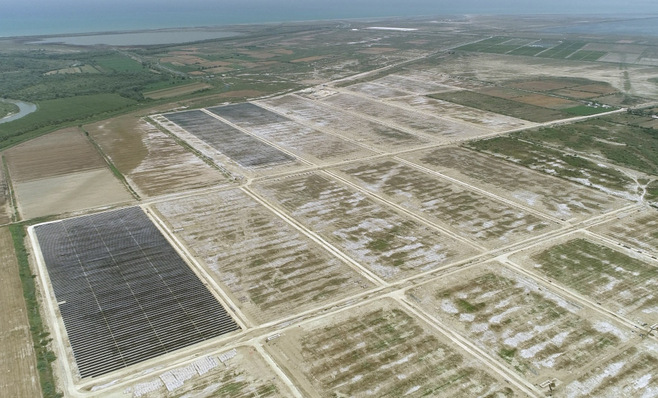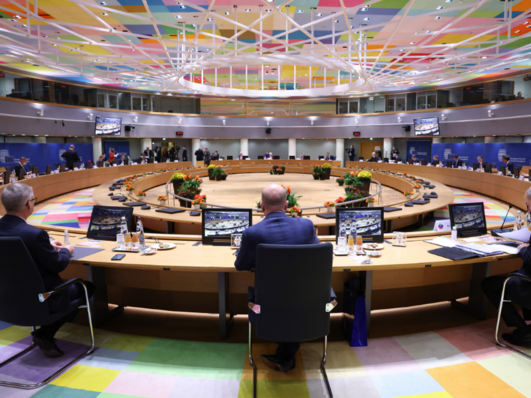Solar power is set to play a key role in unleashing an array of environmental, social and economic benefits and can accelerate our trajectory towards the United Nations’ Sustainable Development Goals (SDGs), thanks to PV’s ability to deliver not only our climate objectives but also bring advantages in terms of employment, health, education, gender equality and poverty alleviation.
Benefits of solar PV for sustainable development
As this year’s global health crisis has highlighted the need to speed the transition towards a decarbonized economy and secure a better future for all, solar photovoltaics (PV) has emerged not only as a cost-competitive source of clean energy but an attractive investment opportunity for green recovery plans. The Global Solar Council’s first Virtual Forum showcased the potential of solar power to bring sustainable development benefits in the short and long term.
PV vital also for people and prosperity
“We are all familiar with the enormous importance of solar power in combatting climate change and transitioning to a decarbonized economy in coming decades,” said Gianni Chianetta, Global Solar Council Chairman. “But on top of the critical goal of protecting the climate and safeguarding the environment, investing in solar offers a host of other benefits: solar energy is vital not only for the Planet, but also for People and Prosperity.”
Did you miss that? IEA: Renewables as winners
The relevance of solar for the SDGs is highlighted by a few key facts: 789 million people today remain without access to electricity (SDG 7) and 300 million children are without power at primary school (SDG 4) and a staggering 90% of the global population is at risk due to air pollution (SDG 3). That said, 11.5 million people are already employed in renewable energy (SDG 8) and 32% of them are women (SDG 5) while 17.1% of final energy consumption comes from renewables (SDG 13).
Better health and service, green jobs, empowerment of women, clean air, resilient communities
“Solar PV offers immense opportunity to accelerate the SDGs,” said Bahareh Seyedi, Senior Sustainable Development Officer, UN Secretariat, Department of Social and Economic Affairs. “Solar PV is already driving the transformation of energy systems and that will have a ripple effect through integrated action that will touch on a number of SDGs.” She noted in particular that this shift to clean energy – both on-grid and off-grid – will help deliver better health and services, create green jobs and growth, empower women, provide clean air and reduced pollution, open up pathways to net-zero emissions and enable resilient communities.
Create 11.7 million jobs by 2030
With the prospect of renewable energy’s share of global electricity generation more than doubling between 2017 and 2030, the “Transforming Energy Scenario” of the International Renewable Energy Agency (IRENA) forecasts solar PV will account for 13% of power production by 2030 compared with 1.7%. That surge means solar will attract more investment than any other renewable energy technology and create the highest number of jobs – 11.7 million by 2030 – further contributing to GDP and welfare gains, for example from reduced air pollution.
“Especially in this Covid context, it’s important to note that these benefits will occur already in the first few years of increased investment in renewables and energy transition-related technologies,” said Rabia Ferroukhi, IRENA’s Director of the Knowledge Policy and Finance Centre. “Renewable energy offers employment prospects for people with a wide range of experiences and backgrounds and therefore good opportunities for local value creation and the possibility therefore to drive other SDGs.”
Develop skills for tomorrow`s solar jobs
For Paulette Middleton, Board of Directors of the International Solar Energy Society (ISES), the issue of solar jobs goes beyond those employed directly in the PV industry to cover many related jobs in solar-enabling industries and all those who use or promote solar. “Almost any profession you think of can touch and is already touching into solar,” she commented.
To develop skills and build capacity for tomorrow’s solar jobs, therefore, Middleton encouraged developing programs that extend from school children through to technical training and professional development and even to education of the general population as a whole.
Cost-effective, green desalination solutions
Solar PV’s “ripple effect” is well illustrated by the economic, social and health benefits gained by increasing access to energy through off-grid technologies and by providing clean water to all, for example using solar to create cost-effective, green desalination solutions on both a small and large scale.
Read more: Two awards for water desalination project in Somaliland
Patrick Tonui, Head of Policy and Regional Strategy at GOGLA, said the global off-grid solar industry has provided 280 million people with access to affordable, clean electricity in just nine years. In an estimated 40% of cases, access to light has replaced kerosene as a fuel, bringing a series of positive impacts.
Lower costs for desalination by incorporating renewable energy
“You can see across all system sizes, off-grid customers are able to generate a significant extra income for their daily livelihoods, which is important. That translates into creating about 1.31 million full-time equivalent jobs in emerging economies by 2022, over half in rural communities,” Tonui explained.
“Relevant to the role of the PV industry in sustainable development and poverty alleviation is the IDA commitment to advocate H20 minus C02 solutions to reduce the C02 footprint and lower costs for desalination by incorporating renewable energy to meet increasing global water needs,” said Shannon K. McCarthy, Secretary General of the International Desalination Association (IDA).
Put in place the right legislative and regulatory framework
In order to ensure rapid progress towards the SDGs, therefore, it’s critical that governments and institutions adopt an integrated perspective and put in place the legislative and regulatory frameworks needed to trigger greater investment in solar PV while removing barriers to mass adoption of solar technologies.
Necessary six-fold investment growth
“Global decarbonization will require a roughly six-fold investment growth to about €800 billion annually for PV by 2030-2040, depending on success in energy efficiency and the spread and economics of other renewables,” commented Dr. Stephan Singer, Senior Climate Science and Global Energy Policy Advisor, Climate Action Network International (CAN). “The barriers are legislative, political and bureaucratic, not financial or technical. We need tailor-made and appropriate legislation depending on the country and regions, not a one-size-fits-all solution.”
Set the level playing field
“Business and technology solutions are necessary to combat climate change,” concluded David Wortmann, Head of the Board, Energy Watch Group, and CEO of DWR eco. “In order to promote clean solutions, we need to set the level playing field with competing technologies emitting greenhouse gases. Strong political objectives and incentive structures are needed for that.” (hcn)







